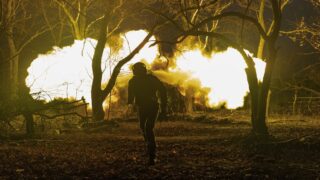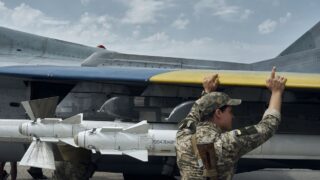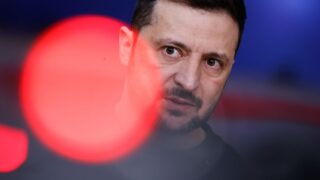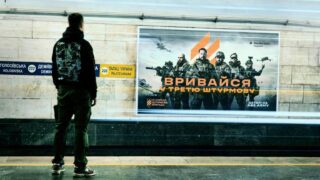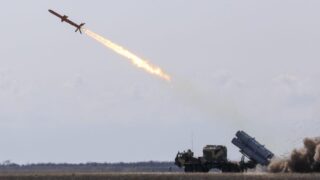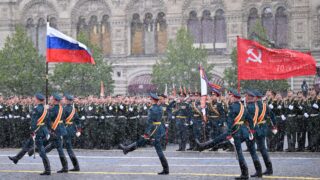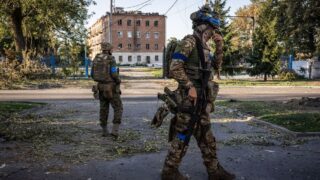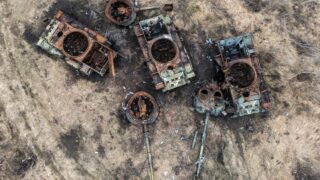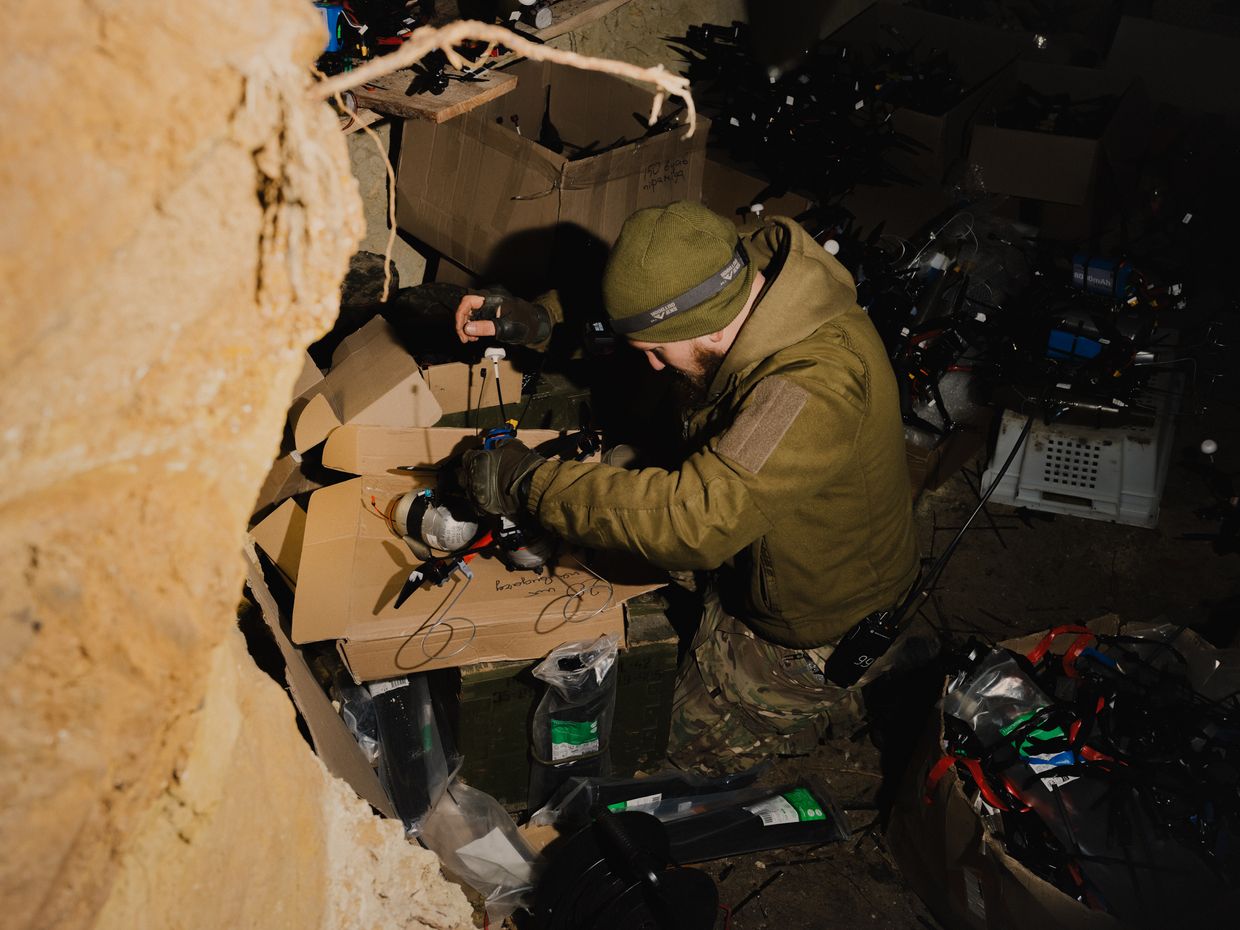
Lacking manpower to hold back Russia, Ukraine turns to its crack drone units
Editor’s note: This story contains scenes and images that some readers might find disturbing.
In accordance with the security protocols of the Ukrainian military, soldiers featured in this story are identified by first names and callsigns only.
KUPIANSK AREA, Kharkiv Oblast – Snow, sleet, fog, the lot; when the weather is at its worst is when Russian soldiers tend to go out on assault.
That’s what the traditional wisdom dictates anyway: the harder it is for Ukrainian drones to watch and enter the battlefield, the more chances that small Russian infantry groups have of trudging their way to Ukrainian positions unscathed.
After a day and night of steady snowfall, the sky begins to clear just before dawn, during the silent drive to Ukrainian drone positions south of Kupiansk in Kharkiv Oblast.
Closer to the ground though, a stubborn layer of fog continues to hang, through which hares and deer can be seen bouncing out of the way of the drab green pick-up truck.
The drone team wakes up around six in the morning. Though less than two kilometers from Russian positions themselves, they have set up a comfy dugout, complete with bunk beds and a heavy-duty gas heater.
“We'll have a more or less quiet day,” says Oleksandr “Skhid,” the 26-year-old commander and navigator, as he opens his work laptop in the dugout, “but since there's fog, it means that more of their infantry will be able to slip through, as there isn't very strong surveillance on our side right now.”
“The last time we had a major mechanized assault there was bad weather.”
As the rest of the four-person team is still getting out of bed, it quickly becomes clear that the day will be far from quiet.
A group of about six Russian infantrymen has been spotted by colleagues in reconnaissance, creeping forward through a snowy tree line.
“Copy, we’ll get to work,” Skhid relays to his commander.
Having barely got out of bed, Yaroslav “Strilok” heads to the neighboring dugout to arm and prepare the weapon of choice: a seven-inch first-person view (FPV) drone with a custom-made fragmentation munition ziptied to the bottom.
Pilot Vladyslav “Skuba” sits down in a lawn chair next to Skhid and dons the ubiquitous goggles, preparing to transport his human vision and dexterity inside a high-precision weapon.
Skhid, meanwhile, is honing in on the location of the Russian soldiers, given away by their bright thermal signatures in the winter twilight.
Within a few minutes, drones are in the air, with just about four minutes of flying between them and their targets.
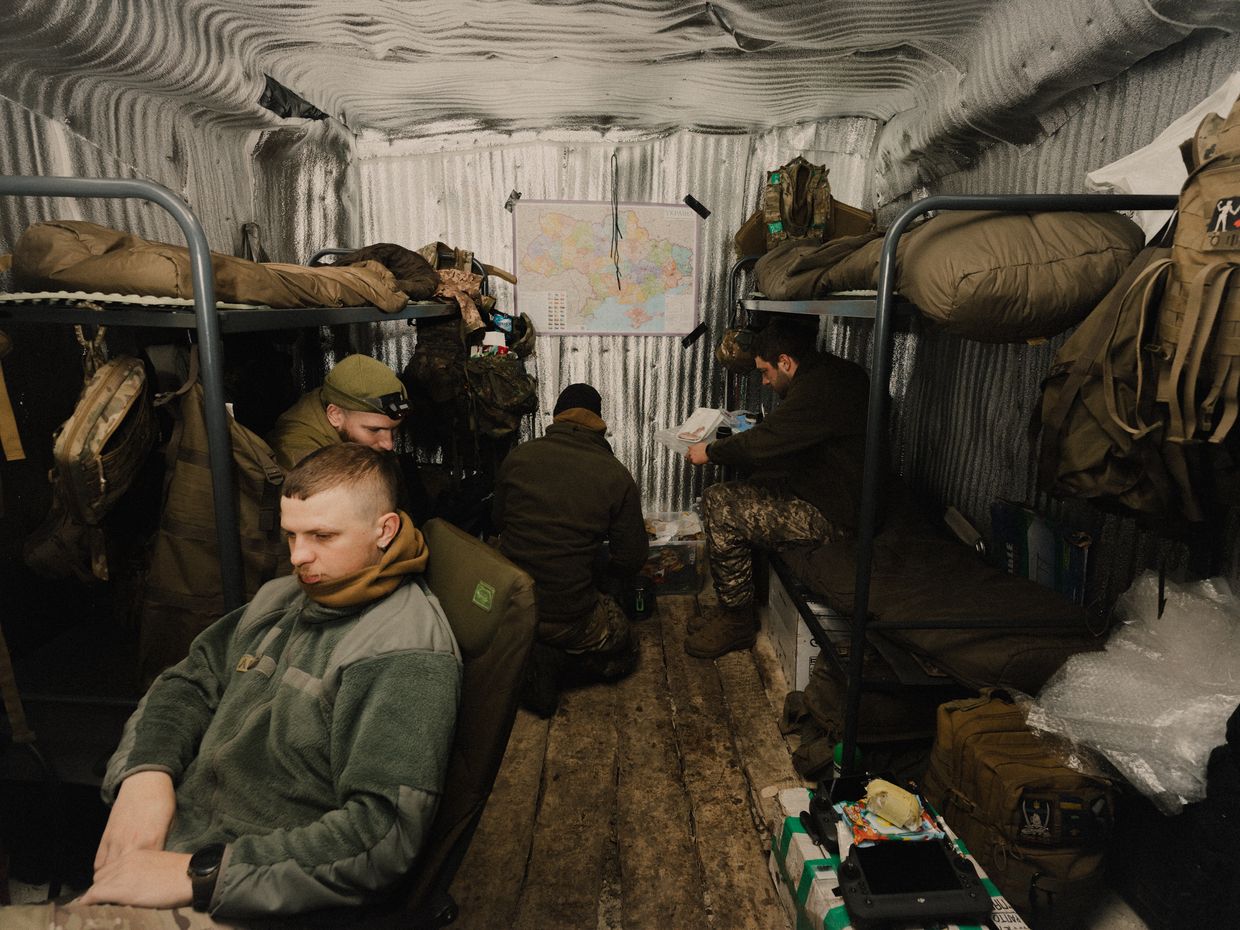
This FPV team belongs to the Achilles Strike Drone Battalion, part of Ukraine’s 92nd Assault Brigade, and one of the most effective drone units in the country.
Initially forming as a ragtag drone reconnaissance group in May 2022 under the command of Kyiv City Council member Yuriy Fedorenko, the unit became one of Ukraine’s first official strike drone companies in February 2023.
Over the following year, with the use of drones surging on both sides of the war, Achilles forged this new type of unit with a personalized, systematized approach, from the training of the steady stream of new recruits to the organization of battlefield work.
Less than a year later, the company became a battalion and is now looking to expand further to the regiment level.
The rapid evolution and expansion of Ukraine’s best drone units comes at a tumultuous time: as the country struggles against dire shortages in combat-effective infantry and Moscow looks to press its advantage ahead of the return of Donald Trump to the U.S. presidency.
After two years of heavy fighting, since the area was liberated from Russian occupation in September 2022, Russian forces have made major inroads in Ukraine’s defense of Kupiansk, reaching the Oskil River to the city’s south in October last year.
Whether it’s FPV suicide drones or makeshift bombers, unmanned aerial vehicles (UAVs) are now often taking the lion’s share of the task of stopping Russian assaults upon themselves.
In this context, the work of next-generation soldiers like Skhid and his team is key. Still, the results are a confronting glimpse at the future of war: where everything that moves can be the target of a cheap, high-precision manhunt.
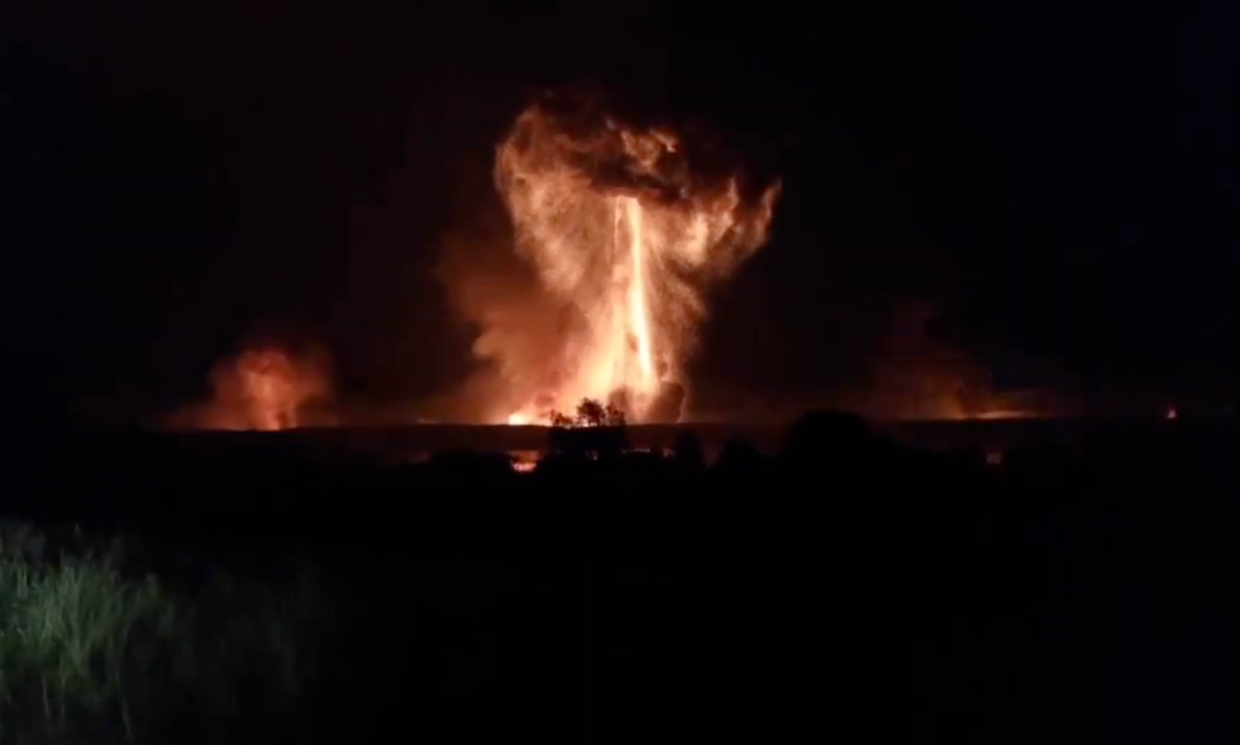
Morning hunt
“There he is, just to the right!”
It isn’t long after the drone reaches the tree line that Skhid spots the first enemy infantryman in the tree line on the first-person feed.
By now, the Russian soldier knows he is being hunted; the chaotic screeches of an FPV are nothing like the steady whir of a reconnaissance drone, and grow deafeningly loud the closer the drone gets.
Skuba looks for a way to close the distance, something that is much easier said than done in the circumstances.
Touching any stray branch can easily bring down the fragile quadcopter, but hovering for too long in search of an opening also gives the targets the chance to shoot down the drone with a well-aimed rifle burst.
In civilian life, Skuba lived with his young family in Bucha outside Kyiv, working as a programmer and learning the piano in his free time.
Like almost all pilots like him in the military, he first learned the intricate art of FPV piloting on a computer simulator, before graduating to physical drones when he joined Achilles in the summer of 2024.
Unlike commercial camera drones like the DJI Mavic model commonly used for reconnaissance, FPV drones have no in-built stabilizers: even the smallest jerk of the copter — up, down, left, right, around — is the result of the most delicate of manual adjustments by the pilot.
“It's a somewhat specific job,” said Skuba. “It's a balance between being careful enough, fast enough, and maneuvering through obstacles in the air.”
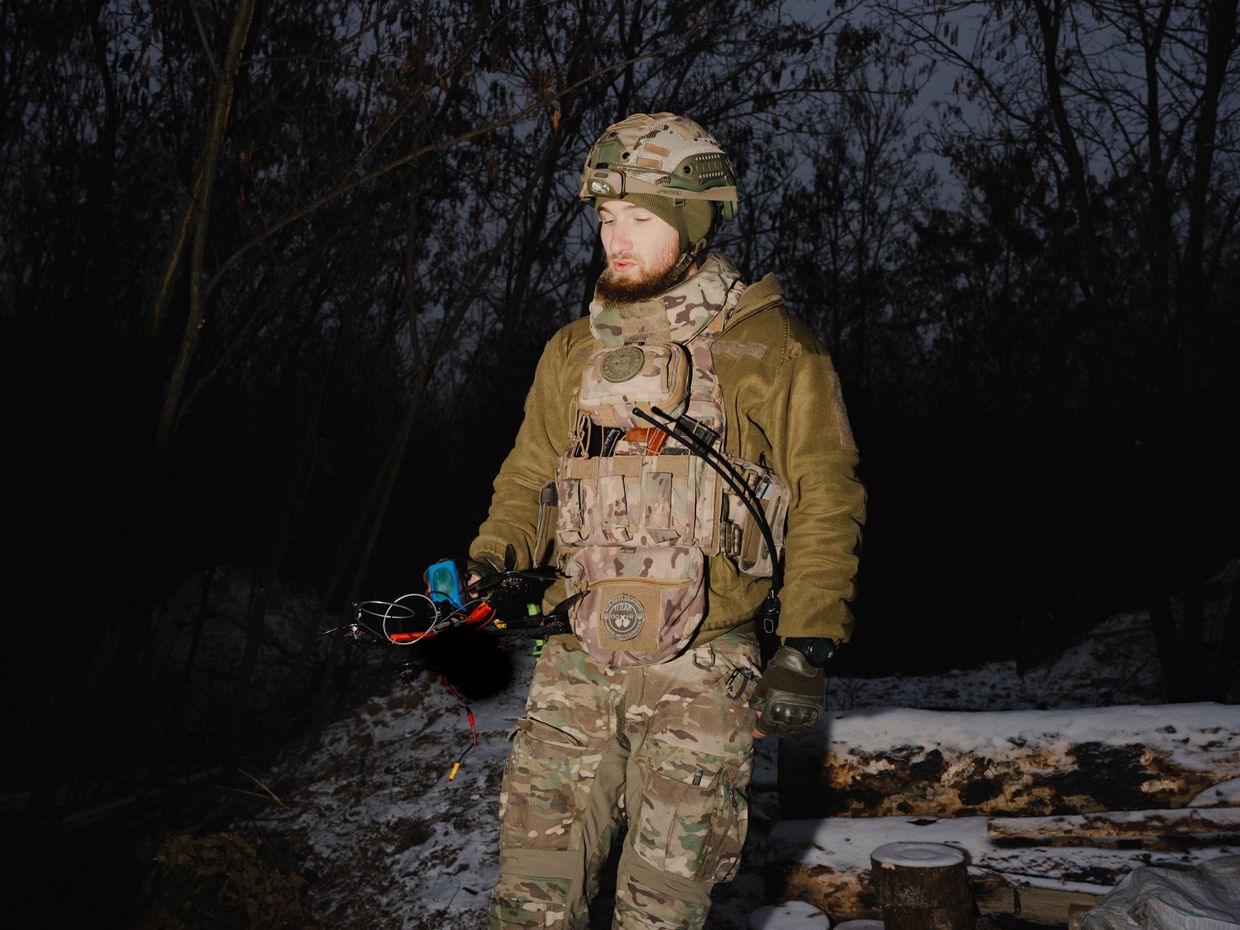
Having made it through the bushes, the drone bears down on the enemy. The last second of the FPV’s video feed shows neither fight nor flight, as the Russian soldier simply keels over onto the ground with his back to his attacker.
The video cuts out on impact.
“Was there an explosion?” Skhid asks rhetorically, waiting to see the hit from the view of the reconnaissance drone. But the livestream, delayed by a few seconds, shows no explosion.
“Looks like it was a dud,” mutters Skhid. “Strilok, another one!” he shouts immediately in the direction of the other dugout.
Barely able to take his goggles off before the next flight, Skuba has no time for frustration; within two minutes, the drone heads out again to the same spot.
This time, after a similar dance between the trees, Skuba dives in again, and this time the munition detonates.
After a puff of grey smoke on the reconnaissance stream, the Russian infantryman lays still, face down amongst the bare trees.
“The mood constantly shifts, from one successful strike to the next failure, and so on, and so on,” said Skuba. “It's like a rollercoaster.”
Of the initial group of six Russian soldiers, two were killed in the morning’s work, while the rest managed to scatter and take cover.
With no more thermal signatures in the tree line, the team finally has time to make their first coffee of the day.

Finding an opening
Not long after the first mission, the order comes out to fly out again: the reconnaissance team has discovered how the Russian infantry got to the tree line.
Two Russian armored vehicles, a BMP infantry fighting vehicle and MT-LB armored personnel carrier, stand still at an intersection in the field.
“This is the first mechanized attack we have seen in this area in a long time, maybe about six weeks,” says Skhid.
This is a common job for an FPV team: to destroy disabled and abandoned vehicles on the battlefield before Russian forces get a chance to evacuate and repair them.
Inside the other dugout, Strilok prepares the munitions for the flight: first the drone, then the bomb, and finally, arming the crude wire initiator system which allows the suicide drone to detonate on impact.
Dancing around the dark underground space, the bright beam of his headlamp reveals the scale of the arsenal at the team’s disposal: over 150 kamikaze drones stacked up on shelves and ammunition boxes along the earthen walls.
Each of these drones costs about $300-500: not cheap, but still a much more affordable fire asset than, for example, a Western-made 155mm howitzer shell, which usually costs about 10 times as much.
First introduced to the battlefield in early 2023, the use of FPVs has been upscaled by both sides to dizzying heights.
After a pledge made at the end of 2023 by President Volodymyr Zelensky to produce one million drones in the next year, Ukraine managed to not only hit but exceed the target, with Defense Minister Rustem Umerov declaring in December last year that over 1.5 million FPVs were delivered by the state in 2024.
While the kamikaze drones were first used mainly for enemy vehicles, by mid-2024, top flight units like Achilles had more than enough to spend two or more each on a single enemy infantryman.
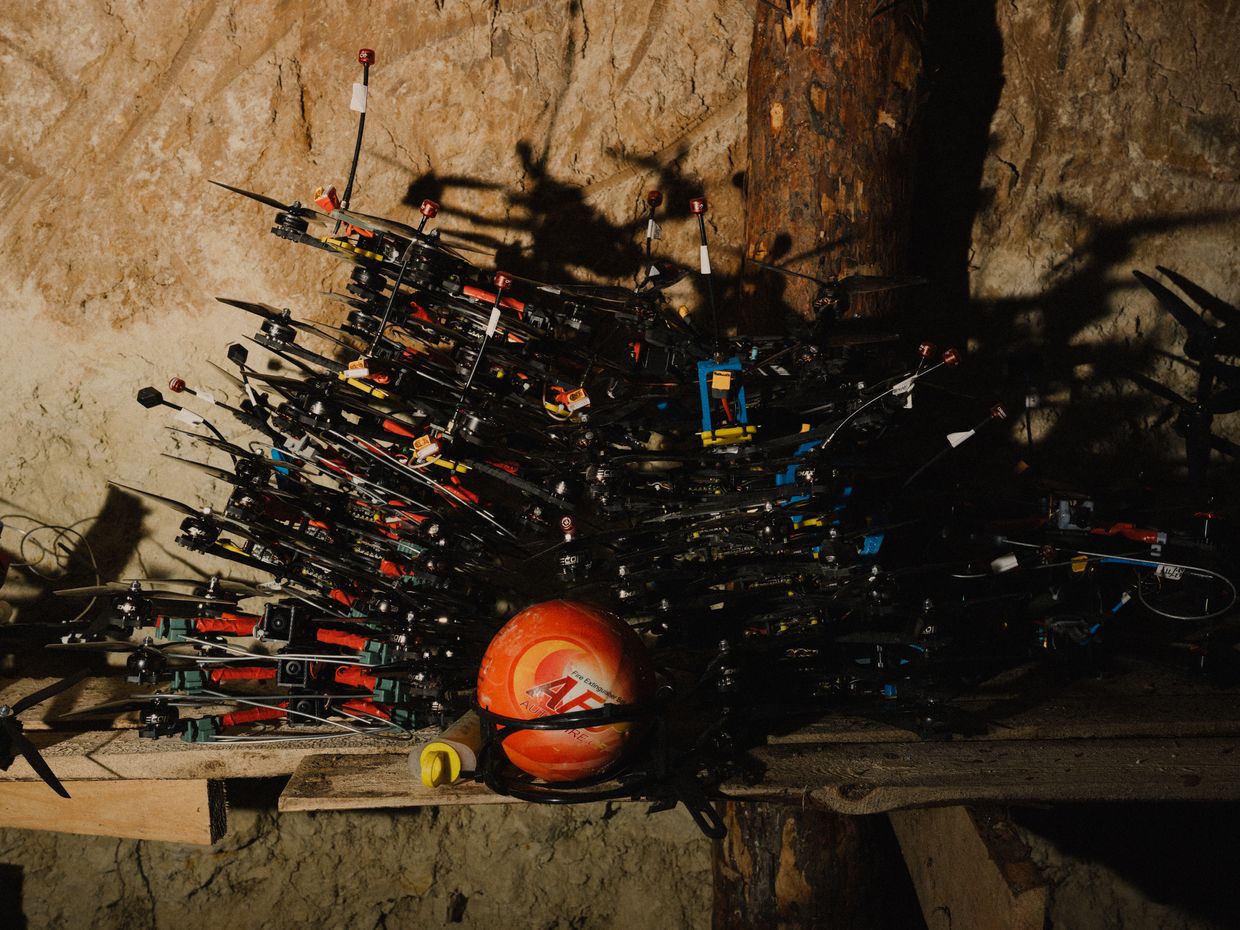
Tall and quiet with a long scraggly beard, 28-year-old Strilok served for over a year as an assault soldier in the 92nd brigade upon the outset of the full-scale invasion, fighting tooth and nail against soldiers from Russia’s Wagner mercenary group at the height of the Battle of Bakhmut.
After being seriously wounded on the battlefield back in 2023, the Kharkiv Oblast native was discharged and could have sat out the rest of the war, but chose to rejoin the fray in a less physically demanding role.
“Back then, I only heard about FPVs a few times,” he said, “there were Mavics dropping bombs, but it was mostly artillery, mortars, grenade launchers firing at us.”
Once Skuba’s drone reaches the spot on the map, he picks his target: the MT-LB. Normally, this would be an easier task than hunting a moving target; the vehicles’ electronic warfare systems have run out of charge, allowing him to approach and choose his angle of attack with a high-quality video feed.
Still, it is easier said than done: the MT-LB has been fitted with a chaotic array of makeshift drone protection, with cages, chains, and sheet metal crudely welded to the vehicle on all sides.
More puffs of smoke on the video feed show that Achilles is not the only drone unit targeting the vehicles: other teams from neighboring brigades are also at work, competing in real time to get the coveted video of destroyed armor to add to their personal accounts.
For a skilled pilot like Skuba, it’s just another challenge: his first attempt lands just short, but the second is flawless: weaving through a literal chink in the armor, he dips the drone right into the open hatch, and within a few minutes, the MT-LB is in flames.
“I like how it burns,” jokes Skhid, repeating a viral phrase used by Ukrainians to describe any juicy strike on a Russian target.
Across the front line in eastern Ukraine, Russia continues to use a mix of armored attacks and creeping waves of squad-level infantry assaults to storm Ukrainian positions.
Unable to conduct effective combined arms offensives on a larger scale, Russian forces’ tactics often amount to simply getting as many bodies upfield as quickly as possible to overwhelm the Ukrainian defense.
“They have their pre-ordained routes, along which their infantry moves forward, position by position,” said Skhid. “We know where these positions are, and we are always watching them. As soon as our reconnaissance sees a group or even just a couple of them, we get to work.”
“Some tree lines are just littered with corpses… quite often, it happens that you're flying and can't even tell whether it's already a dead body that's been lying there for a while or someone just pretending to be dead.”
As heavy as the Russian losses are, against an overstretched Ukrainian defending force suffering severe shortages in infantry, it often works.
“It's good that there’s more equipment, and more drones,” said Strilok, “and our artillery has been working much better.”
“It’s bad that there’s no infantry, this is really bad.”
Over 2024, Ukraine’s most consistent problem on the battlefield has indeed been manpower, with the third year of Russia’s full-scale war bringing with it mounting casualties and desertion rates, especially in the infantry.
With the tough conditions and danger to life in the infantry well-known in society, those still joining the army voluntarily rather than through mobilization are much more likely to enter the new growth sector: drones.
As a result, in the absence of a properly manned defense, it is often the presence of well-equipped crack drone units like Achilles that makes the difference between Russian attacks being eliminated in the field and gaining ground in a given area.
If a sector can be saturated with enough eyes in the sky through night and day, coupled with strike teams like Skhid’s, Ukrainian forces have a much better chance of knocking out entire Russian assault formations before the lack of defending infantry becomes a problem.
But in the long term, said Skhid, there is still no replacement for the simple foot soldier.
“Right now, we’re seeing a very heavy concentration of drones in this sector — not just from our unit,” he said. “We have relatively extensive observation here, and there are many people working with all different types of drones.”
“But if there isn’t someone physically sitting in the tree line, we won’t be able to achieve much. We can’t just park a drone there to hold and defend a specific tree line. It’s a massive combination of different elements.”
Open season
After a quick lunch of ready-to-eat beef and buckwheat stew, more Russians are spotted in the foggy livestream.
This time, the infantrymen — three of them — aren’t sticking to the tree line, but strolling single file through an open field. Nowhere to run, nowhere to hide.
The team wastes no time: Strilok arms the drone and brings it to the launch platform outside, Skuba dons his goggles and lifts off, while Skhid keeps a keen eye on his target.
Surviving a precision attack from an FPV drone is one of the most terrifying and difficult challenges for an infantryman fighting in this 21st-century war, and a far cry from the threat of artillery, which at least has much more luck involved.
Just like with artillery, there is no substitute for hard cover, but if available, thick vegetation is always a good option, providing protection from view and entangling the drone’s propellers on approach.
But in an open field, there are only two options, neither of which are easy: dodge, and hope the pilot misses, or try to shoot one’s nimble attacker out of the air.
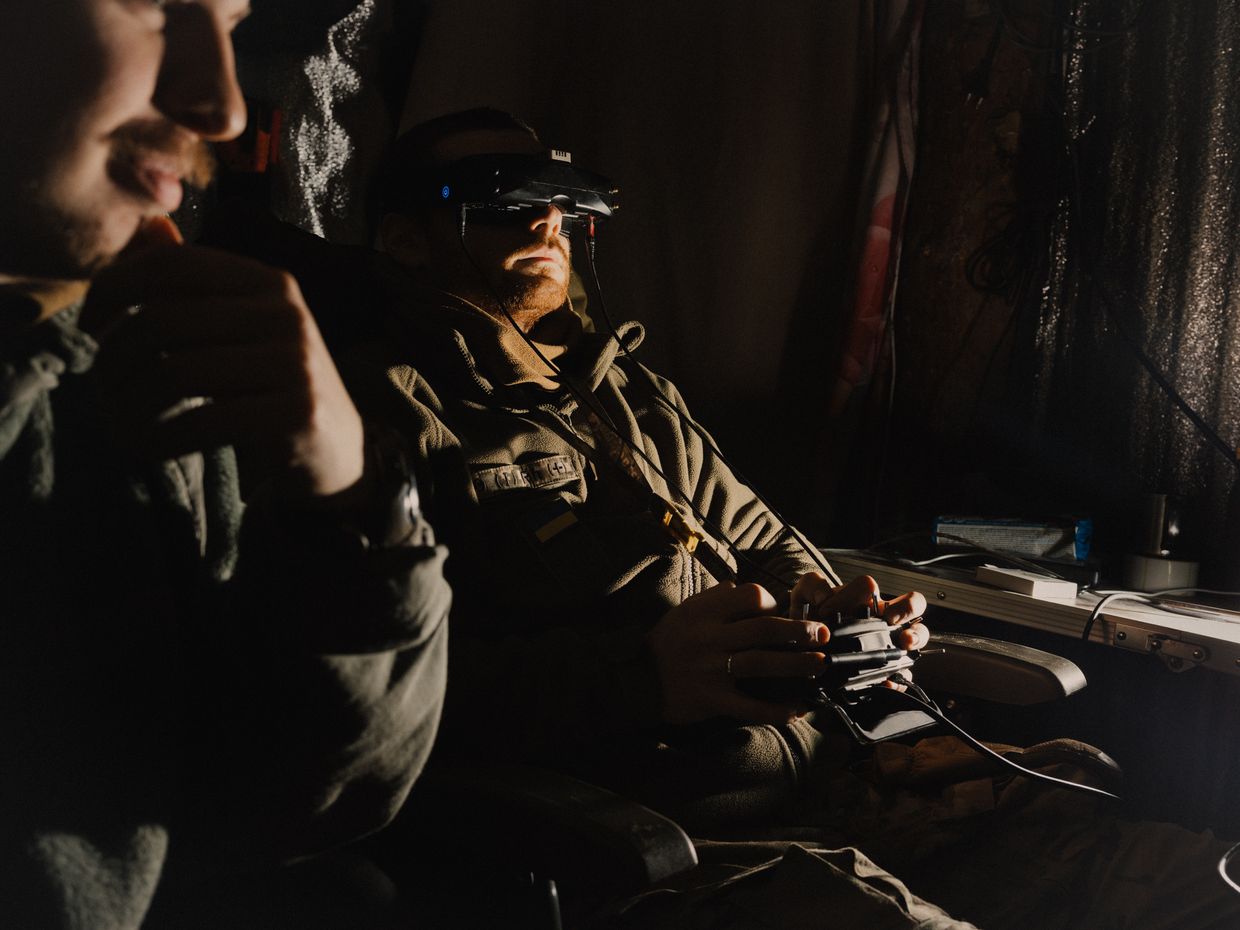
The first infantryman fails to do either. Running in a straight line, he makes an easy target for Skuba, who does not miss. After the hit is confirmed on the livestream, he squirms for a few more seconds before lying still.
Straight away, the next drone takes off. Skuba doesn’t remove his goggles, transporting his eyes straight into the camera of the next quadcopter as they sync automatically.
By now, the Russian assault group knows they are under attack, but continues marching forward anyway.
The second Russian soldier opts for the dodging method, with some success. After several unsuccessful passes, the suicide drone explodes on the ground a meter and a half away from his feet. He rises from the ground, disoriented but still carrying his rifle, and begins limping, clearly hurt badly by shrapnel.
“It's still not always easy, but with each trip, it gets calmer,” said Skuba of his work.
“You start seeing them as a target, you figure out how to approach, you plan your route. The more you know, the more you organize everything, the easier it is to take it step by step.”
The last member of the Russian assault team is running for cover as the third drone arrives, having shown no interest in helping his wounded comrade.
Unlike the others, this one decides to shoot. Turning over his shoulder, the Russian soldier faces the drone, raises his Kalashnikov rifle, and in a split second, Skuba’s FPV video feed cuts out.
Remarkably, the second attempt to target the soldier is met with the same result.
“He’s a bloody sniper, f***!” shouts Skhid in frustration.
More and more, soldiers on both sides have begun to carry shotguns out on missions specifically for protection against drones, but shooting an FPV out of the sky with a rifle while being actively targeted is no mean feat.
Whether through luck or a mix of skill and ice-cold nerves, the Russian infantryman’s sharpshooting gives him just enough time to make it to proper cover.
With the light slowly fading on this short, grey day at war, Skuba flies out one more time to the same field.
The wounded soldier is no longer limping. Laying on his back, but still moving, he could yet be evacuated and return to the fight.
For Skhid, whose family home in Kharkiv Oblast is less than 50 kilometers from these positions, there is no taking chances. Skuba closes in, and after a direct hit to the torso, the Russian soldier’s journey into Ukraine with an invading army meets its permanent end.
“Feelings sometimes rise up during work due to outside events,” said Skuba of the emotional side of his often gruesome work, “it could be something with family, with loved ones, a tragedy related to the war. All of that can accumulate, of course, and some anger, resentment toward the Russians builds up.”
“But sometimes… sometimes it’s just zen, it’s just this smooth, constant work. We see the targets, and we engage them.”
Note from the author:
Hi, this is Francis Farrell, the author of this piece. It's quite a rare thing that as a journalist spending just a day with soldiers, that you are witness to this much action. What I saw in my time with Achilles is proof of two things: first, how damn good these guys are at their jobs, and second, how damn good Russia is at throwing endless waves of humans at Ukrainian defenses. This type of cyberpunk battlefield matchup could be defining for the war in 2025. Whatever ends up happening, you can count on the fact that we will take you right there. Please consider supporting our reporting.







